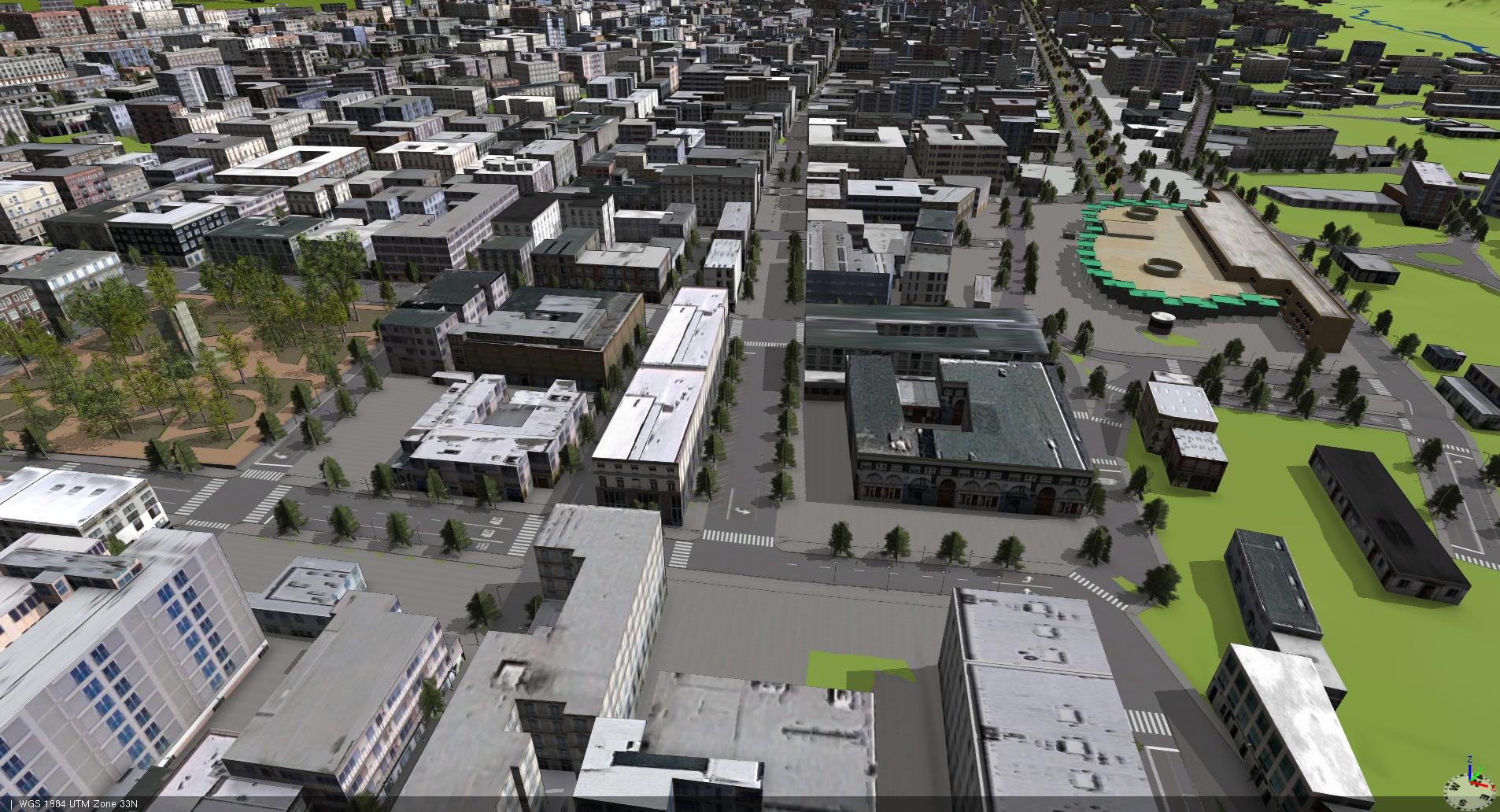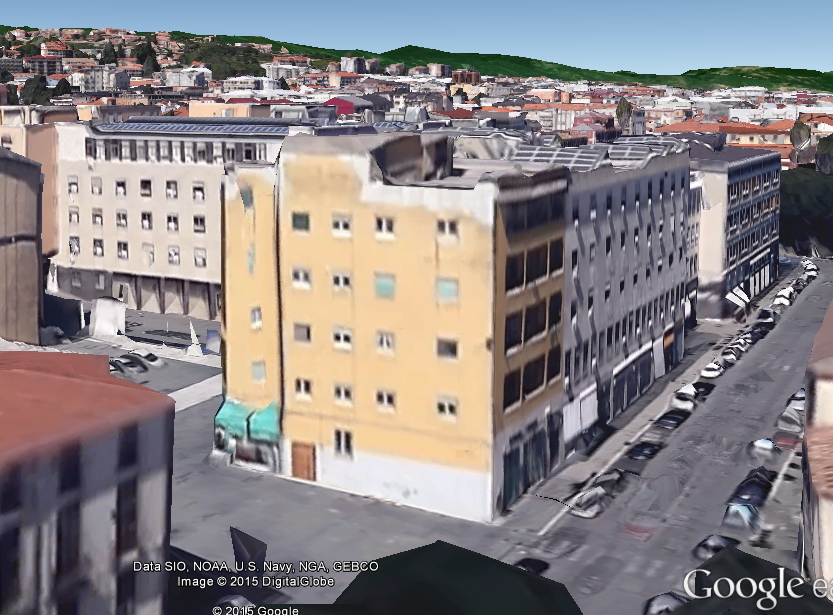- Home
- :
- All Communities
- :
- Products
- :
- ArcGIS CityEngine
- :
- ArcGIS CityEngine Questions
- :
- Re: Create building from footprint with different ...
- Subscribe to RSS Feed
- Mark Topic as New
- Mark Topic as Read
- Float this Topic for Current User
- Bookmark
- Subscribe
- Mute
- Printer Friendly Page
Create building from footprint with different textures
- Mark as New
- Bookmark
- Subscribe
- Mute
- Subscribe to RSS Feed
- Permalink
Hi,
I'm creating a 3d city model with real gis data. I created 3d buildings using "building from footprint" rule, but when I chose a specific texture all the facades of the building are mapped with the same image. Is it possible to change the texture to each facade? Any idea?
Here is an image of the my scene created with CityEngine 2015.2. As you can see, each building has the same textures, but in the reality they are different.
Cheers

- Mark as New
- Bookmark
- Subscribe
- Mute
- Subscribe to RSS Feed
- Permalink
Hey Valerio,
The textures on the walls look different from one another. Can you clarify which textures you are choosing and replacing? Are you trying to match textures to specific buildings?
There are other foot print rules to try for sure, but what is the goal I guess?
David
- Mark as New
- Bookmark
- Subscribe
- Mute
- Subscribe to RSS Feed
- Permalink
Hi David,
Thanks for your quick answer. I want to apply a different texture file to each surface on the building. As you can see in this image, this building has 2 different facades, and I want to be able to change the texture to each facade

- Mark as New
- Bookmark
- Subscribe
- Mute
- Subscribe to RSS Feed
- Permalink
I see! So for the same building you want to change the texture by face. So the reason why most foot print rules don't immediately do this is because they are likely to not know how they are oriented (what is the first edge? how long is it? etc). For example, some of the buildings in scene have multiple small edges that each have to be textured separately. It might be possible to use the comp operation to create different texture choices by face orientation, but to get results that are oriented by the street you will need to check the first edge settings and how you work within them.
Others might have more advice. Do you need to have complete matching detail for your scene?
- Mark as New
- Bookmark
- Subscribe
- Mute
- Subscribe to RSS Feed
- Permalink
Of course I need to improve my scene detail as much as possible, but I see It's more complicated than I though. By the way, I can model the buildings and import as obj files. Just another question: Is better using BuildingShell rule or importing obj 3d model?
However, thank you for another interesting explanation about the huge world of cityengine ![]()
- Mark as New
- Bookmark
- Subscribe
- Mute
- Subscribe to RSS Feed
- Permalink
I think focusing on proposals is a the key aspect that people pay attention to. I think if you have good foot prints like you do, the other stuff can fill itself in.
So this is an interesting question. The building shell rule is great if you are ok with a random texture as opposed to the one that the model might have came with. I have used the building shell rule to make zoning breakdowns of the building, but also to have higher resolution textures than some planimetric models come with because they look better at street level. I will say that once you apply a rule like building shell to a 3D models the number of options you have increase.
Generally there are 3 options that I know for most applying rules to most building/land use models:
1. Lot rules that make a building from a simple property lot, includes setbacks.
2. Footprint rules make buildings from the building outline and extrude it up, texture it, and manipulate it for certain purposes.
3. Shell Rules that essentially allow you change how the imported building looks like by splitting it into floors, texturing it, and even color coding it by land use function.
What is interesting about this hierarchy of rules, is that the closer you get to a shell rule, the less flexibility the rule has about changing the geometry of the original initial shape. This is largely because the ability to both orient yourself spatially in CGA (the programming language for CityEngine) and make decisions about what information you can get from the shape becomes increasingly complex with more edge cases. So a lot rule has a lot of flexibility to fill in setbacks, orient to the street, and do a lot of interesting things from a basic starting geometry. Foot print rules have a lot of flexibility vertically, but because there can be so many different edges on the geometry it can sometimes be a pain to reliably orient the foot print to other assets (it is possible though, there are many geometry functions that can help). And finally shell rules rarely if ever change the original geometry of the building because a planimetric building is already pretty close to reality.
So to answer the question, what you are doing with CityEngine and which model choices are better depends on what you are trying to do. Maybe you want the flexibility of lots to make custom proposals, or you have work flow that achieves a similar goal with footprints (see Bergmann Associates for examples in Rochester NY). And on the flip side maybe you want the realism that comes with planimetric models (and have money to buy them), and you just want something that you can put into a City Model. It depends on the end goal. 😃